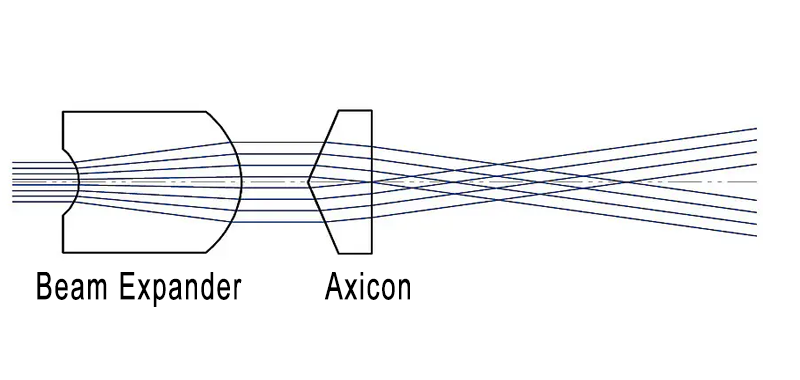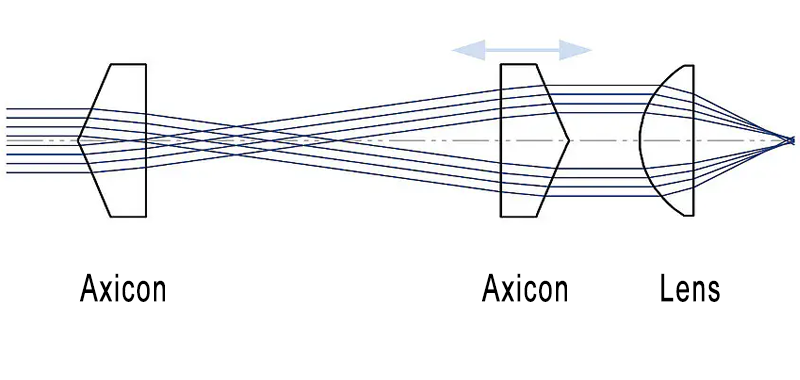Axicon and Bessel Beam
Compared with aspheric lenses, the shape of an axicon resembles a cone. Due to its conical geometry, the axicon can generate so-called Bessel beams, which exhibit an annular beam profile. The diameter of the annular beam depends on the apex angle and decreases as the distance between the apex angle and the image plane increases. The width of the annular beam remains constant.
![]()
(1)Axicon generates Bessel beam

(2)The correspondence between annular width and cone angle
Generating (non-diffracting) Bessel beams using an axicon is primarily determined by the cone angle (α) of the axicon. Therefore, in many applications, two regions are of particular interest: first, the long region (a) where the intensity distribution remains nearly constant, and second, the region (d) where the intensity distribution forms a ring. The length (a) depends on the axial angle (α) and diameter (ØEP) of the incident beam, while the width of the Bessel beam is influenced solely by the axial angle (Figure 2). Figure 1 illustrates the diameter (d) of the annular light distribution, which depends on the distance (l) and increases as the distance (l) grows. Consequently, the width of the light ring is approximately half the diameter of the incident beam.
Applications of Various Annular Beams Using Axicon Lenses
Axicon lenses are primarily used for beam shaping and various laser applications. Their special applications also include generating non-diffracting Bessel-like beams. It is important to note here an area with nearly constant intensity distribution, whose length is determined by the angle and diameter of the axicon lens. Bessel beams are non-diffracting beams, making them highly suitable for applications in medicine, research, measurement technology, and alignment. Specifically, they can be utilized in optical tweezers and light-sheet fluorescence microscopy. When combined with other axicon lenses or conventional lenses, various beam profiles can be generated, such as collimated annular beams and variable-focus annular beams. The optical effects achieved by combining axicon lenses with laser beam expanders, conventional lenses, or a second axicon lens are illustrated below.
By combining two conical lenses with identical angles, a collimated annular beam can be generated. The beam diameter varies with the distance between the two components.
![]()
This device is used to generate variable annular focal points. By moving the second axis, the diameter of the annular focal point can be adjusted.

Generation of Annular Focusing - Adjusting distance through lens focal length, modifying diameter via central
![]()
By combining with a laser beam expander, the rays of the axicon lens were optimized. This allows for adjusting the length of the generated Bessel

By altering the distance between the axes, the focal length of the sphere can be adjusted. This configuration enables the reduction of the aspheric focal length, thereby achieving focusing below the diffraction limit.

Improving the focal depth of aspheric surfaces—enabling focusing below the diffraction limit.